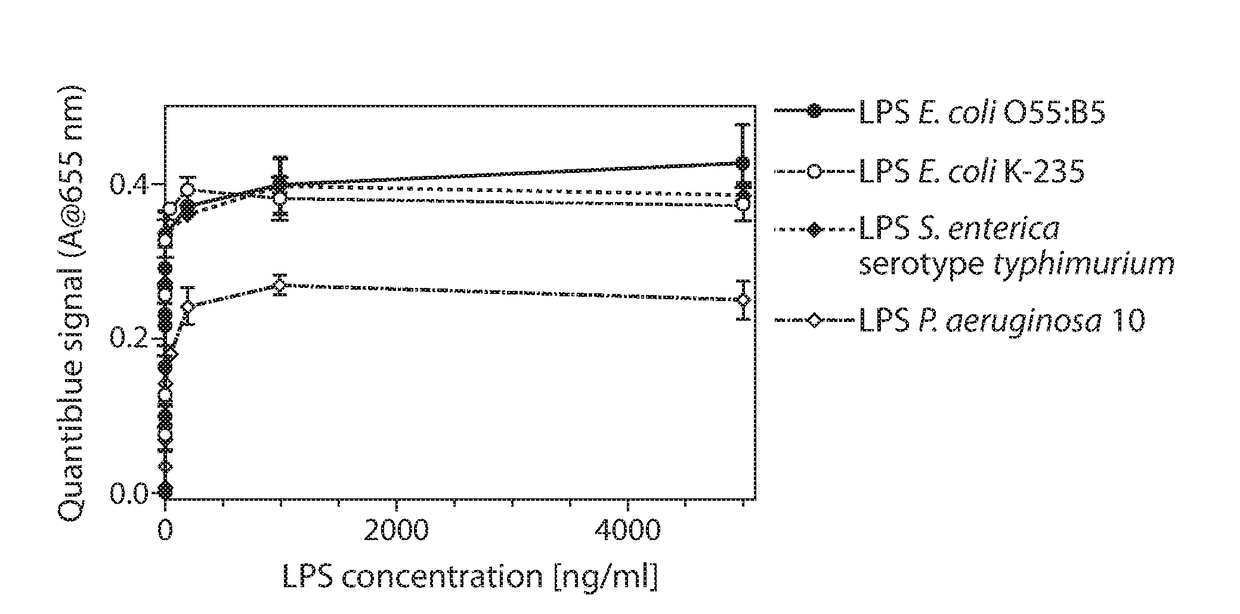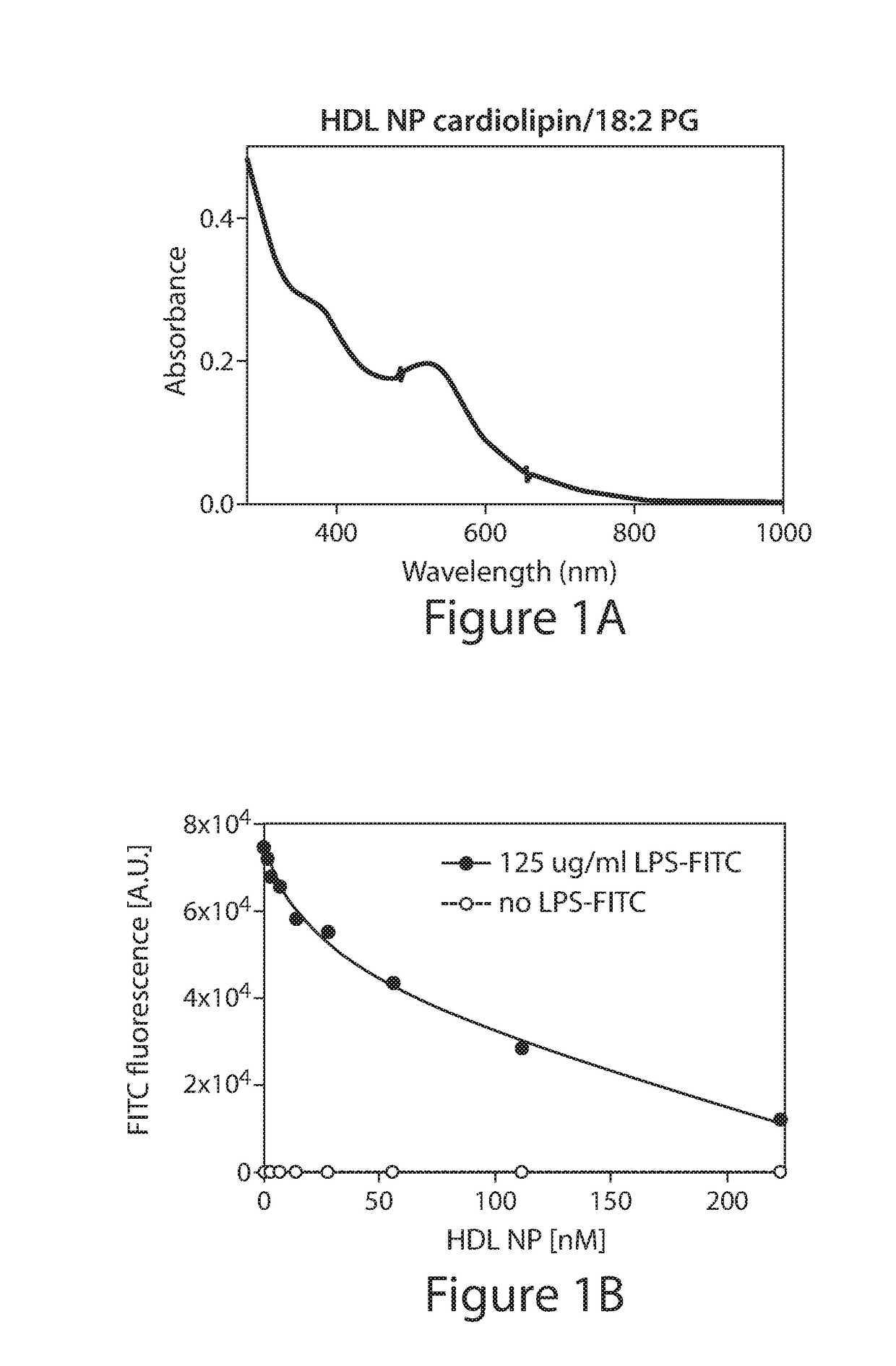High density lipoprotein nanoparticles for inflammation
- Summary
- Abstract
- Description
- Claims
- Application Information
AI Technical Summary
Benefits of technology
Problems solved by technology
Method used
Image
Examples
example 1
HDL NP Reduce LPS-Induced Immune Response in a Human Monocytic Cell Line
[0125]HDL Nanoparticle (NP) Synthesis: We synthesized HDL NP that are based on a 6 nm gold scaffold, covered by a covalently attached lipid bilayer, and stabilized by ApoA 1. Size, shape, cholesterol binding and efflux properties of the HDL NP have been shown to be comparable to the ones of natural HDL. Novel HDL NP have now been developed that have activity surprisingly beneficial in the inhibition of inflammatory mediators, that are, thus, useful in the treatment of bacterial sepsis. These particles are in the low nanometer range and stable, as indicated by absorbance, dynamic light scattering and zeta potential measurements. Importantly, our HDL NP bind to lipopolysaccharides in vitro. The HDL NP can be used for the detoxification of LPS during bacterial sepsis. Additionally, the data demonstrate that there are optimal conjugates that modify macrophage responses to LPS challenge.
TABLE 1Different HDL NP constr...
example 2
HDL NP Reduce LPS-Induced Immune Response in Human Blood
[0132]Experiment: The LPS-induced immune response was also tested in human whole blood. The data suggest that the HDL NP also suppress a LPS-induced immune response in primary cells.
[0133]Results: It was found that HDL NP suppresses the LPS-induced increase in protein levels of inflammatory cytokines IL-8, IL-1beta and TNF-alpha (see FIG. 11).
PUM
| Property | Measurement | Unit |
|---|---|---|
| Fraction | aaaaa | aaaaa |
| Fraction | aaaaa | aaaaa |
| Diameter | aaaaa | aaaaa |
Abstract
Description
Claims
Application Information
 Login to View More
Login to View More - R&D
- Intellectual Property
- Life Sciences
- Materials
- Tech Scout
- Unparalleled Data Quality
- Higher Quality Content
- 60% Fewer Hallucinations
Browse by: Latest US Patents, China's latest patents, Technical Efficacy Thesaurus, Application Domain, Technology Topic, Popular Technical Reports.
© 2025 PatSnap. All rights reserved.Legal|Privacy policy|Modern Slavery Act Transparency Statement|Sitemap|About US| Contact US: help@patsnap.com



